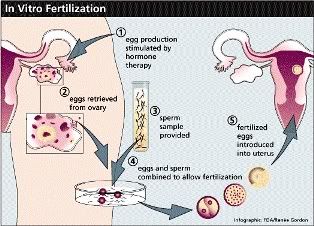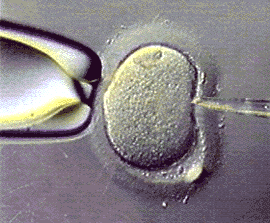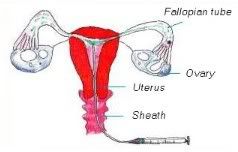PLEASE LEAVE COMMENTS ... THIS SITE IS STILL UNDER CONSTRUCTION, BUT I WILL LIKE TO HEAR SOME FEEDBACK !
THINGS THAT ARE COMING SOON:
METHODS OF OVUALATION
FERTILTY URBAN LEGENDS
SYMPTOMS COUPLES GO THROUGH WHILE BATTLING INFERTILITY
MY PERSONAL RESEARCH PAPER
MORE VIDEOS DISPLAYING THE INFERTILITY PROCEDURES
Friday, March 28, 2008
INFERTILITY VIDEOS
HERE ARE SOME INFERTIIITY VIDEOS, SOME OF WHICH ARE INFORMATIVE, HUMOROUS AND INSIRING:
ALL VIDEOS COME FROM YOUTUBE !
ALL VIDEOS COME FROM YOUTUBE !
10 BEST INFERTILITY CENTERS IN THE U.S.A.
10 Best Fertility Centers
1. Colorado Center for Reproductive Medicine, Englewood
2. The Center for Reproductive Medicine and Infertility at NewYork-Presbyterian Hospital/Weill-Cornell Medical Center, New York City
3. University Fertility Consultants at Oregon Health & Science University, Portland
4. New York University School of Medicine, Program for In-Vitro Fertilization, Reproductive Surgery, and Infertility, New York City
5. The Infertility Center of St. Louis at St. Luke's Hospital
6. The Nevada Center for Reproductive Medicine, Reno
7. Presbyterian Hospital ARTS Program, Dallas and Plano, TX
8. Florida Institute for Reproductive Medicine, Jacksonville
9. Southern California Reproductive Center, Beverly Hills
10. Center for Reproductive Medicine of New Mexico, Albuquerque
BROUGHT TO YOU BY: http://www.parents.com/parents/story.jsp?storyid=/templatedata/child/story/data/1129758221012.xml
ALSO CHECK OUT: http://infertility-ivf.com/ChildMagazine.pdf
1. Colorado Center for Reproductive Medicine, Englewood
2. The Center for Reproductive Medicine and Infertility at NewYork-Presbyterian Hospital/Weill-Cornell Medical Center, New York City
3. University Fertility Consultants at Oregon Health & Science University, Portland
4. New York University School of Medicine, Program for In-Vitro Fertilization, Reproductive Surgery, and Infertility, New York City
5. The Infertility Center of St. Louis at St. Luke's Hospital
6. The Nevada Center for Reproductive Medicine, Reno
7. Presbyterian Hospital ARTS Program, Dallas and Plano, TX
8. Florida Institute for Reproductive Medicine, Jacksonville
9. Southern California Reproductive Center, Beverly Hills
10. Center for Reproductive Medicine of New Mexico, Albuquerque
BROUGHT TO YOU BY: http://www.parents.com/parents/story.jsp?storyid=/templatedata/child/story/data/1129758221012.xml
ALSO CHECK OUT: http://infertility-ivf.com/ChildMagazine.pdf
INFORMATION REFERENCES
REFERENCES
- Ashley, B.M., O’Rourke, K.D. (1997). Health care ethics, (4th ed.). Washington: Georgetown University Press.
- Frey, K.A., Patel, K.S. (2004). Initial evaluation and management of infertility by the primary care physician. Mayo Clinic Proceedings, 79(11), 1439-1443.
- Hirsh, A., (2003). ABC of subfertility: Male subfertility. British Medical Journal, 327(7416), 669-675. Retrieved form the Proquest database on March 4th, 2005.
- Keatings, M., Smith, O.B. (2000). Ethical and legal issues in Canadian nursing, (2nd ed.). Toronto: WB Saunders.
- Kolettis, P.N. (2003). Evaluation of the subfertile man. American Family physician, 67(10), 2165. Retrieved from the Proquest database on March 4th, 2005.
- Qaadri, S. (2003). Advice for helping sub-fertile couples. Medical Post, 39(27), 34-36. Retrieved from the Proquest database on March 4th, 2005.
- Roedler, R., Nystrom, M. (2004). Infertility: A review of its treatment. Pharmacy Practice, 20(12), 1-8. Retrieved from the Proquest database on March 4, 2005.
§Serono Inc. (2005). Coping emotionally. Retrieved from www.fertility.com on March 1st, 2005 - Social Change Online. (2005). FPA Health; Fact sheet. Retrieved from www.fpahealth.org.au on February 28th, 2005
- The National Woman’s Health Information center. (2004). Healthy Pregnancy. Retrieved from www.4woman.gov/pregnancy on February 28th, 2005.
§Wong D., Perry, S., & Hockenberry, J. (2002). Maternal child nursing care (2nd ed.). St. Louis: Mosby Inc.
Monday, March 17, 2008
TREATMENTS FOR INFERTILITY

Some Options Are:
- For ovulatory dysfunction, many women begin treatment with medication to over stimulate the ovaries to ovulate.
- Drugs like Clomiphene are used which cause the woman to superovulate. Timed intercourse is recommended for 5 to 10 days after treatment.
- Multiple births are a risk factor in this treatment as more than one egg is released.
- For tubal occlusions, there are procedures which may be performed to repair the occlusion, but these procedures run the risk of causing scar tissue as well.
- It begins with daily injections of gonadotropins to stimulate the ovaries to ovulate many oocytes, these oocytes are then harvested from the woman and are either exposed to sperm cells isolated from the man for natural penetration by the sperm, or a single “perfect” sperm is injected directly into the oocyte.
- The fertilized egg is then incubated for 3 – 5 days and if development is proceeding normally, is implanted into the woman’s uterus.
- IUI – intrauterine injection – for men with a semen abnormality IUI may be performed.
- If these treatments are unsuccessful, or unavailable to the infertile couple they may wish to look into donor eggs, donor sperm, surrogacy, or adoption
MALE INFERTILITY

REASONS FOR MALE INFERTILITY
- The most common factor in male infertility is one or a combination of sperm deficits
- Abnormal sperm (teratozoospermia)
- Low sperm count (oligozoospermia)
- Decsreased motility of sperm (asthenozoospermia)
- No sperm in ejaculate (due mainly to tubal deformities, called azoospermia)
- All sperm non viable or non motile (necrozoospermia)
- Inflammation of the seminal blood vessels can cause blockages which impedes the transport of semen into the ejaculatory duct (varicocele) and can be treated surgically.
- STI’s can also cause tubal occlusions in males, Chlamydia and Gonorrhea can cause scar tissue to form in ducts causing blockages.
- Chemotherapy and radiation treatment in the inguinal region can also damage the testis and cause infertility.
FEMALE INFERTILITY

REASONS FOR FEMALE INFERTILITY
- The most common cause of Female infertility is failure to ovulate.
- This may be due to a lack of stimulation by the pituitary Gland, stress, trauma, obesity, anorexia, or excessive athletic activity, Premature Menopause, ovarian cysts, or ovarian cancer to name a few.
- Chemotherapy and radiation treatments around the abdomen may damage the ovaries and cause infertility.
- In order to conceive a child, a woman’s fallopian tubes must be patent.
- There are many causes of tubal obstruction:
- PID – pelvic inflammatory disease – can cause a buildup of scar tissue in the fallopian tubes
- STD’s like Chlamydia and Gonorrhea can cause a buildup of scar tissue in the fallopian tubes if not detected or treated early
- Anatomical anomalies
- Reversal of tubal ligation
- There may also problems with the uterus which can cause infertility
- Severe endometriosis
Subscribe to:
Posts (Atom)




